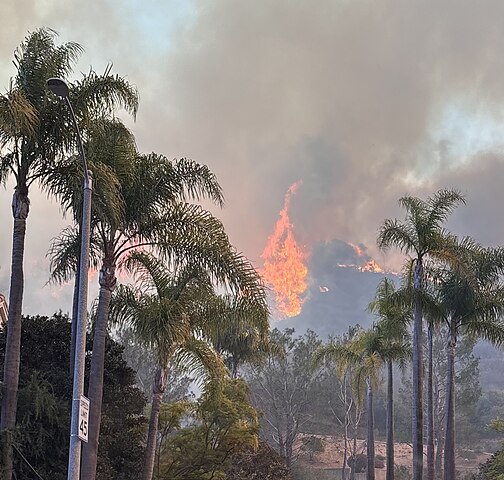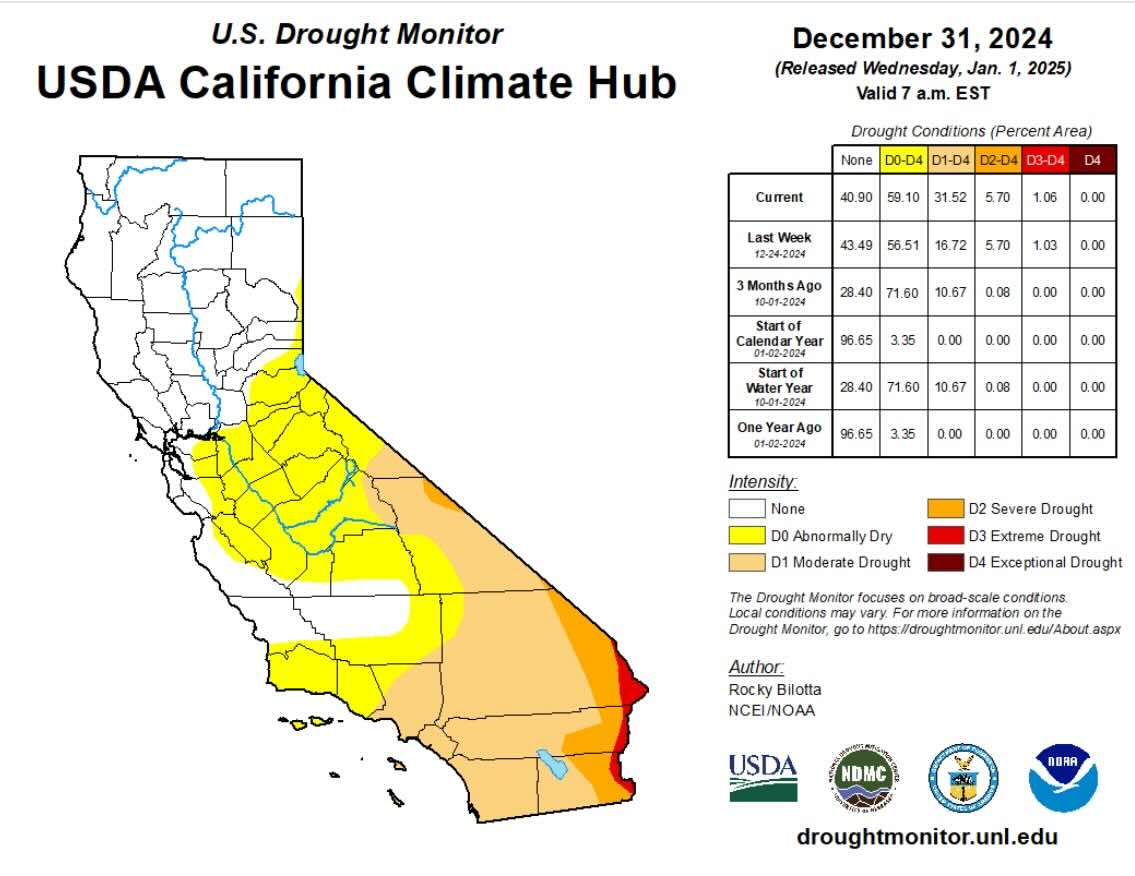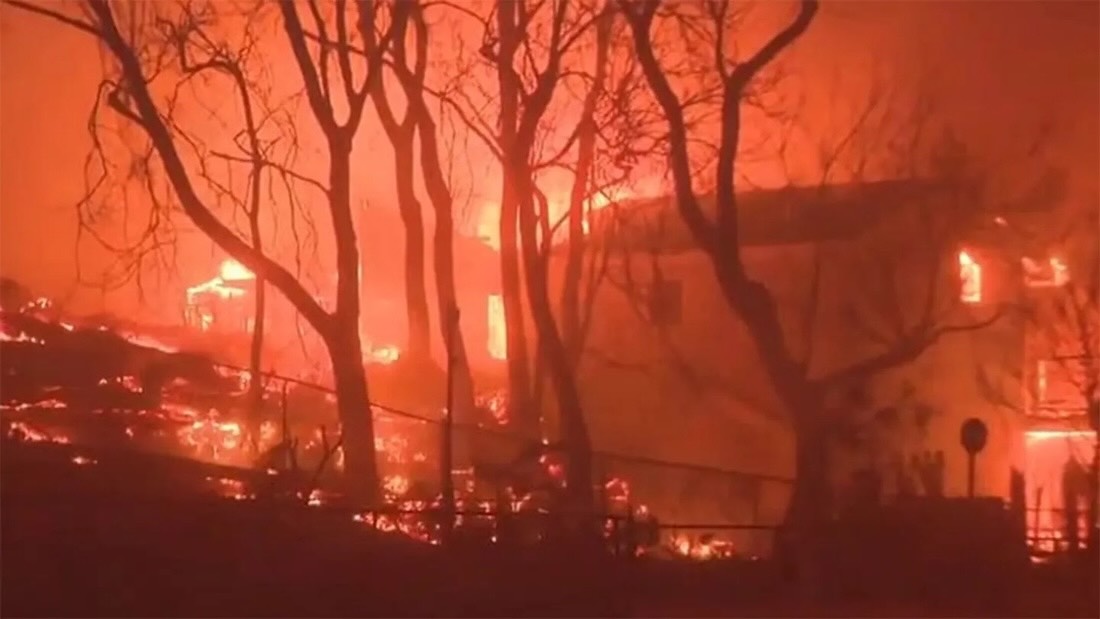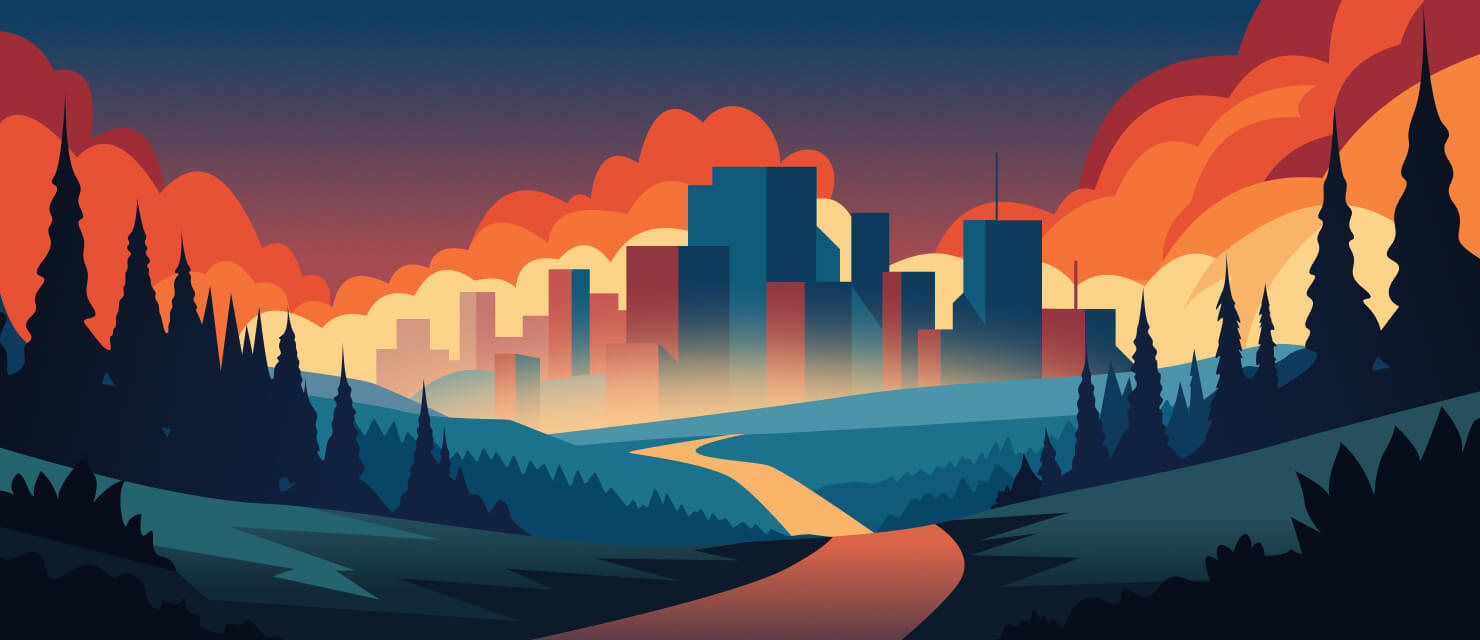The beginning of 2025 was marked by tragedy, with devastating fires raging across Los Angeles, California. The Pacific Palisades Fire and Eaton Fire were the most destructive ones. More than 100 fires ravaged the upscale neighborhood, destroying over 12,000 structures and the homes of several prominent celebrities. This number is astonishing as compared with 2024, with over 2,000 structures destroyed throughout the entire year.
Among affected celebrities were Paris Hilton, Anthony Hopkins, and Mark Hamill, who lost their properties in the fire. Tragically, the disaster took at least twenty lives. The fast-moving fires also postponed the highly anticipated Oscar ceremony as smoke and chaos engulfed the city.
 Source: Ariam23, CC BY 4.0, via Wikimedia Commons
Source: Ariam23, CC BY 4.0, via Wikimedia Commons
As of January 2025, the Palisades Fire was among the TOP 3 largest wildfires in California, along with the 2018 Camp Fire and the 2017 Tubbs Fire. However, the key difference between this blaze and its counterparts is that it occurred out of season.
How did the fires start in California in winter when the wildfire season is actually in summer? Traditionally a time of cooler weather, winter in California is not known for wildfires. However, this disaster demonstrates how changing climate conditions and other factors have turned the fires into a year-round threat.
Southern California Wildfires: What Was the Reason?
Wildfires in Los Angeles County are no longer confined to the scorching summer months. Several interconnected factors have caused dangerous fire weather conditions outside traditional seasons, as evidenced by the catastrophic January fires in the Pacific Palisades. So what caused the fires in California 2025?
Climate Change
Climate change is at the heart of the growing threat of out-of-season wildfires, and the Palisades fires have demonstrated that. Rising global temperatures have caused prolonged droughts and dried vegetation, turning them into fuel. Despite being a cooler month, January saw record-breaking heat and dry winds, perfect conditions for the ignition and spread of wildfires.
Persistent Drought Conditions
California has been in a severe drought, with reservoirs at critically low levels and rainfall nearly absent since mid-2024. As of December 31, 2024, around 31% of California was experiencing drought conditions, while 27% was classified as abnormally dry. This lack of water has left vegetation brittle and highly combustible. By January 2025, what should have been lush, rain-fed greenery was instead a tinderbox ready to ignite.

The Role of Santa Ana Winds
The infamous Santa Ana winds are known for their ability to dry out vegetation and spread flames at astonishing speeds. In January 2025, these winds reached hurricane-force gusts of over 80 mph, fanning the flames and driving them through neighborhoods. These winds made containment efforts nearly impossible for the Los Angeles Fire Department, rapidly escalating the destruction.
The Devastating Impact of the January 2025 Fires
The January 2025 California fires in Pacific Palisades left a trail of destruction that extended far beyond the charred landscapes. Entire neighborhoods were reduced to ash, iconic landmarks and celebrity homes were lost, and thousands of residents faced the heartbreak of evacuation and uncertainty.
Loss of Life and Property
The January fires claimed over twenty lives, injured dozens, and displaced over 150,000 residents. Among the lost structures lost were historic landmarks. For example, the Palisades Charter High School, which was featured in Hollywood movies like Carrie, was destroyed by the Palisades Fire.
 Source: FOX 11
Source: FOX 11
The Hollywood fire disrupted major cultural events, including the Oscars, which were postponed due to safety concerns. The iconic Dolby Theatre and surrounding areas became inaccessible as thick smoke blanketed the city.
Environmental Consequences
The fire burned around 40,000 acres of land, destroying habitats and disrupting ecosystems. The immediate aftermath includes heightened risks of soil erosion and flash flooding, as charred landscapes are less able to absorb rainfall.
Health Hazards from Smoke
The thick smoke from the fires worsened air quality across Southern California, with particulate matter levels far exceeding safe limits. Residents, especially those with respiratory conditions, were advised to stay indoors due to the hazardous air quality.
Most Destructive Fires in California, January 2025
According to Cal Fire, the top 5 most destructive and dangerous fires in California as of January 15, 2025 were:
| Incident | Started | Acres |
|---|---|---|
| Palisades Fire | 1/07/2025 | 23,713 |
| Eaton Fire | 1/07/2025 | 14,117 |
| Kenneth Fire | 1/07/2025 | 1,052 |
| Hurst Fire | 1/08/2025 | 799 |
| Lidia Fire | 1/08/2025 | 395 |
Data source: Cal Fire
Out-of-Season Fires in Los Angeles Area: Adapting to a New Reality
The January 2025 fires illustrate the increasing unpredictability of fire seasons in California. As climate change accelerates and human expansion into fire-prone areas continues, it’s clear that wildfires are no longer limited to traditional seasons. Adapting to this new reality involves a combination of stricter building codes, better land management, and increased public awareness about wildfire prevention.






